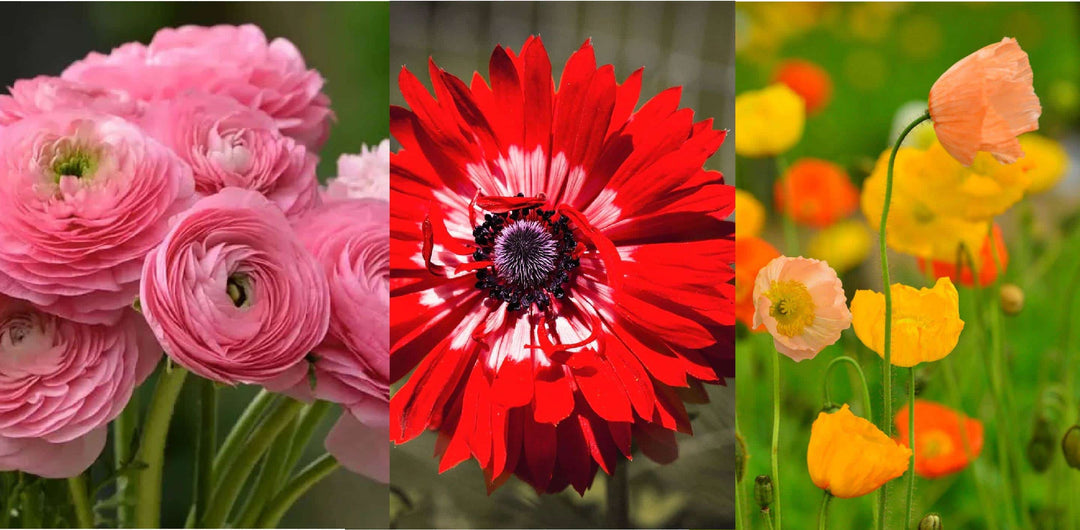How To Grow Water Lilies
How to Grow Water Lilies
Whether you have a pond or simply want to add a touch of tranquility to your garden, water lilies are the perfect choice. Not only do they create a serene atmosphere, but they also provide shade and shelter for fish and other aquatic creatures. So if you're looking to create a peaceful oasis or simply appreciate the beauty of nature, water lilies are sure to make a splash in your garden. Get ready to be mesmerized by these exquisite pond plants that bring both beauty and serenity wherever they bloom, by learning how to grow your very own Water Lilies!
Step 1: Choosing the Right Variety of Water Lilies

Alright, let's dive into the wonderful world of water lilies! When it comes to choosing the perfect variety for your pond or garden, there are a few options to consider. You've got hardy water lilies, tropical water lilies, and even miniature water lilies to choose from.
Hardy water lilies are known for their resilience and ability to withstand colder temperatures. They come in a range of colors and sizes, making them a popular choice for many garden enthusiasts.
On the other hand, tropical water lilies bring a touch of exotic beauty to your space. These vibrant blooms thrive in warmer climates and can add a splash of tropical paradise to your pond or garden.
If you're working with limited space or prefer something more compact, miniature water lilies might be just what you're looking for. These petite beauties pack a punch with their small size but still offer stunning blooms that will catch anyone's eye.
So take some time to explore the different varieties available and consider factors like climate, space constraints, and personal preference. With the right variety of water lily at your fingertips, you'll be well on your way to creating a breathtaking aquatic oasis.
Step 2: Selecting the Ideal Location for Your Water Lily Pond or Container

Now that you've decided to create a beautiful water lily pond or container garden, it's time to choose the perfect location for it. Finding the ideal spot is crucial as it can greatly impact the health and growth of your water lilies.
First things first, consider whether you want to have a traditional pond or opt for a container garden. This decision will determine the flexibility of your location options.
For a traditional pond, you'll need to find an area in your yard that receives at least six hours of sunlight each day. Water lilies thrive in sunlight, so make sure there are no large trees or structures casting shadows over the chosen spot.
If you're going for a container garden, you have more flexibility in terms of location. You can place it on your patio, balcony, or even indoors near a sunny window. Just ensure that wherever you choose, there is enough sunlight for your water lilies to flourish.
Keep in mind that water lilies also require some protection from strong winds. Placing them near tall shrubs or fences can help create a natural windbreak and prevent damage to their delicate leaves and flowers.
By selecting the right location with adequate sunlight and protection from strong winds, you'll be setting up your water lily pond or container garden for success!
Step 3: Preparing the Soil and Planting Your Water Lilies Correctly

Alright, let's dig into step 3: preparing the soil and planting your water lilies correctly. This is where we get our hands dirty and set the foundation for healthy growth.
Firstly, you'll want to make sure you have the right soil mix. Water lilies thrive in a wetland soil mix that retains moisture while still allowing for proper drainage.
Now, let's talk about planting depth. It's important to know that different types of water lilies have different planting depth requirements. Generally, you'll want to plant hardy water lilies at a depth of 12-18 inches, while tropical water lilies prefer a slightly deeper planting depth of 18-24 inches. Be sure to check the specific instructions for the variety you're working with.
When it comes to dividing and repotting water lilies, it's usually best to do this every couple of years or when they become overcrowded in their current container. Gently remove the plant from its pot and carefully separate any rhizomes or tubers that have multiplied. Then, repot them in fresh wetland soil mix, making sure they have enough space to grow and spread out. Remember, proper preparation and planting are key for your water lilies' success.
Step 4: Providing Proper Care and Maintenance for Healthy Growth

Alright, folks, let's dive into step 4 of our guide on providing proper care and maintenance for healthy growth in your water garden. This time, we'll be focusing on three important aspects: fertilizing water lilies, controlling pests and diseases, and some handy pruning and deadheading tips.
First up, let's talk about fertilizing those gorgeous water lilies. These aquatic beauties need a little boost every now and then to thrive. Make sure to use a slow-release fertilizer specifically formulated for water plants. Just sprinkle it around the base of the lily pads or follow the package instructions for best results.
Next on our agenda is keeping those pesky pests and diseases at bay. Nobody wants their water garden overrun by unwanted critters or plagued by nasty infections! Regularly inspect your plants for any signs of trouble like aphids or fungal diseases. If you spot any unwelcome visitors or suspicious spots on your plants, take action immediately with appropriate treatments recommended for aquatic environments.
Last but not least, let's discuss pruning and deadheading - to keep your water garden looking tidy and vibrant. Remove any yellowing or decaying leaves from your plants to prevent them from rotting in the water. Deadhead spent flowers regularly to encourage new blooms and maintain a visually pleasing display.
Remember, taking proper care of your water garden is crucial for its healthy growth. So grab that fertilizer, keep an eye out for troublemakers, and give those plants a little trim when needed! Your flourishing aquatic oasis will thank you in full bloom!
Enjoying the Serenity of Blooming Water Lilies in Your Own Backyard Oasis

In conclusion, creating your own backyard oasis with blooming water lilies can bring a sense of serenity and tranquility to your life. Imagine stepping outside and being greeted by the vibrant colors and delicate fragrance of these beautiful flowers.
By incorporating water lilies into your outdoor space, you can create a peaceful retreat where you can unwind after a long day. Whether you choose to have a small pond or a larger water feature, the presence of these enchanting flowers will undoubtedly add an element of natural beauty.
For more information on growing your own water lilies at home, check out the latest episode of Get Up and Grow “How to Grow and Care for Waterlilies” with our President, Gord Nickel below!









